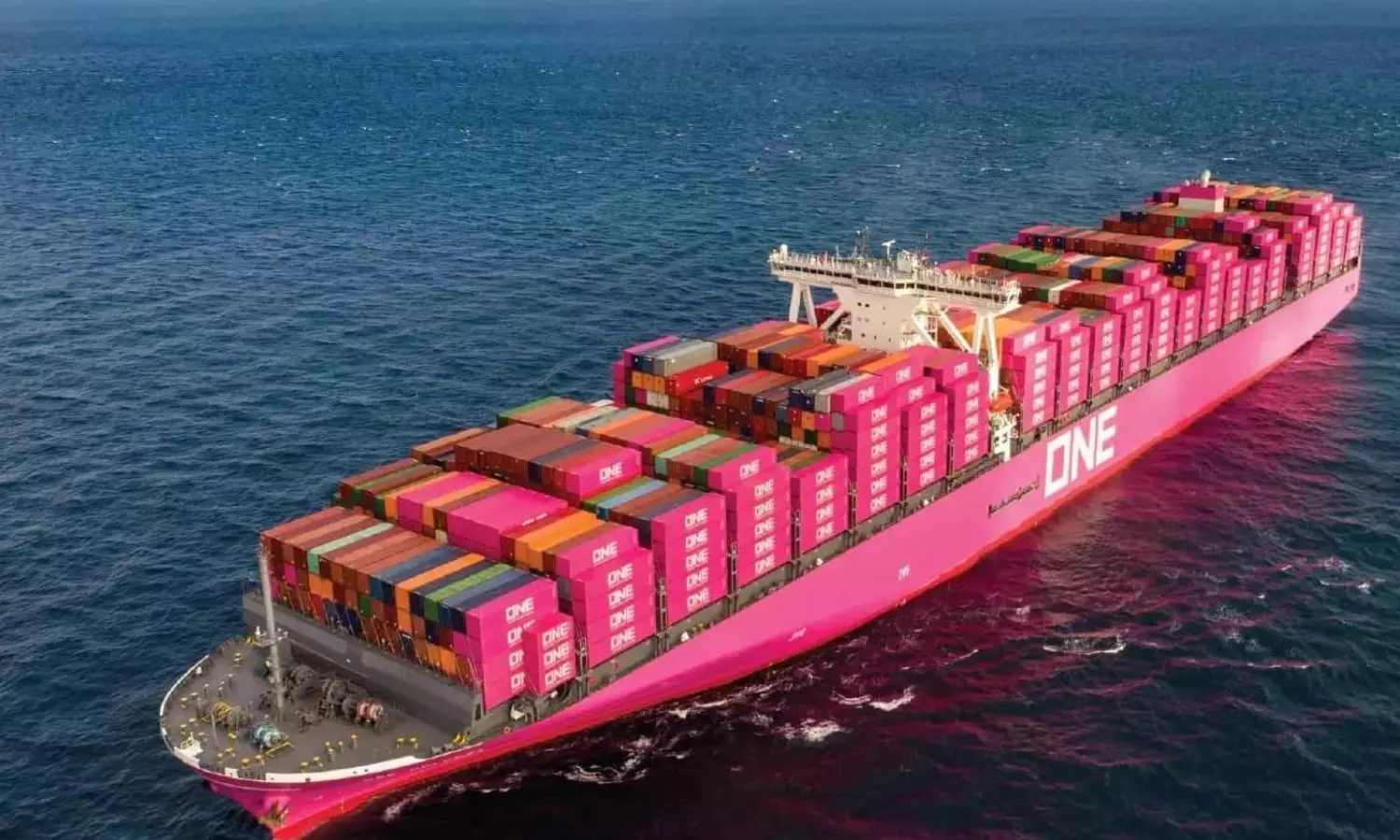Shipping continues to get greener as CEI improves
Ocean Network Express (ONE) the most CO2 efficient carrier on the highest number of trades during second quarter

Shipping is getting greener with Xeneta and Marine Benchmark’s Carbon Emissions Index (CEI) improving in Q2 average scoring across the 13 major trade lanes being lower than Q1.
"This looks even more favourable when we consider eight of the 13 lanes saw carbon emissions per tonne of cargo carried being lower than the corresponding period in 2022. The standout lanes were North Europe to South American East Coast and the U.S. West Coast to Far East, which posted year-on-year CEI reductions of 31.6 and 21.8 index points, respectively," says the latest update from Xeneta.
The emissions gains made in these two lanes is due to larger ships and a reduction in speed – two metrics which carry significant weight in the CEI, the update added. "If we take a slightly longer view and compare Q2 2023 with Q1 2018 (the starting point of the CEI), we see that only three of the 13 major trades post higher emissions. Chief among these is the backhaul trade from the U.S. East Coast to the Mediterranean, which now sits 25 percent higher on the index than it did five years ago."
The biggest mover is the Far East to the U.S. East Coast, which has seen CO2 emissions fall by 23.3 percent between Q1 2018 and Q2 2023, the update added. "In fact, there is largely good news across all major trades out of the Far East which have each improved by at least 11.4 percent."
Capacity management is key
Managing capacity has been a tug of war during Q1 and Q2 as carriers have been met with a 3.3 percent drop in global container demand and a 5.9 percent increase in the size of fleet., Xeneta said in its update. "Not only does this create poor financial market conditions for carriers, it also has carbon emissions consequences – it’s hard to be environmentally efficient when you are running ships half empty.
"The natural response from carriers to this conundrum is to remove capacity from some of the major trade lanes in order to protect freight rates – and so begins the chain reaction throughout the world’s shipping network. We can clearly see the redeployment of ships onto the smaller trades through the average filling data across the 13 major trades."
There’s a new number ONE
The title of the most CO2 efficient carrier on the highest number of trades during Q2 on the CEI is Ocean Network Express (ONE), the update added.
"It emitted the lowest CO2 per tonne of cargo carried from the Far East to the Mediterranean and the U.S. East Coast as well as from the Mediterranean to the Far East.
"In second place, we find Evergreen, Maersk and HMM who each top the rankings in two of the top 13 trades. There are a further four carriers who are the most carbon efficient on one of the top trades."


